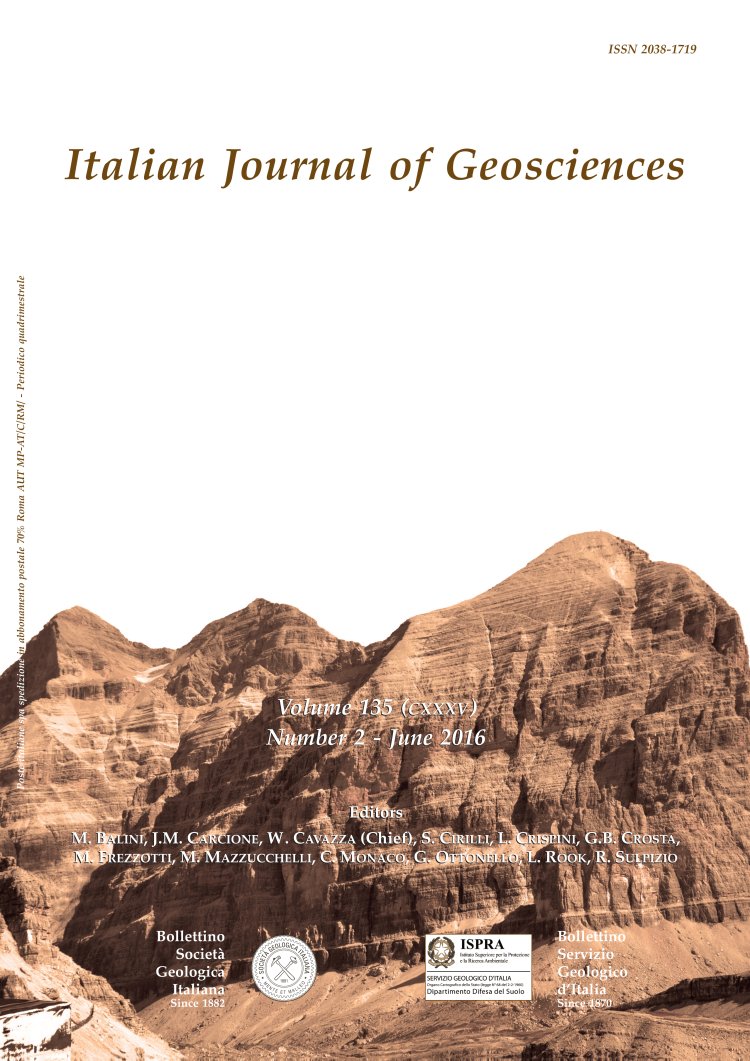
Archaeometric study of a typical medieval fortified granary (Amtoudi Agadir, Anti-Atlas Chain, southern Morocco): a key case for the maintenance and restoration of historical monuments
Giuliana Raffaelli (1), Pedro Robles-Marín (2), Francesco Guerrera (1), Manuel Martín-Martín (3), Francisco Javier Alcalá (4), (5), Maria Letizia Amadori (6), Lahcen Asebriy (7), Iz-Eddine El Amrani El Hassani (7) & Julian Tejera De León (7)
(1) Dipartimento di Scienze della Terra, della Vita e dell'Am biente (DiSTeVA), Università degli Studi di Urbino ''Carlo Bo'', Campus Scientifico "Enrico Mattei", Via Cà Le Suore, 2/4 - 61029 Urbino, Italy.
(2) Departamento de Ingeniería Civil, Alicante University, AP-99, E-03080, Alicante, Spain. Esfera Consultores de la construcción, 30007 Murcia, Spain.
(3) Departamento de Ciencias de la Tierra y Medio Ambiente, Alicante University, AP-99, E-03080, Alicante, Spain. Corresponding author e-mail: manuel.martin.m3@gmail.com
(4) Civil Engineering Research and Innovation for Sustainability (CERIS), Instituto Superior Técnico, University of Lisbon, 1049- 001 Lisbon, Portugal.
(5) Instituto de Ciencias Químicas Aplicadas, Facultad de Ingeniería, Universidad Autónoma de Chile, 7500138 Santiago, Chile.
(6) Dipartimento di Scienze di Base e Fondamenti (DiSBeF), Università degli Studi di Urbino ''Carlo Bo'', Piazza Rinascimento, 6 - 61029 Urbino, Italy.
(7) Département des Sciences de la Terre, Institut Scientifique, Université Mohammed V de Rabat, B.P.703, Rabat, Morocco.
Abstract
Load-bearing (masonry walls) and supported structural elements (ceiling structures) have also been studied in order to define their stability. Worst cases of 1- and 2-height walls, together with worst cases of the wooden or stone ceiling structures have been analyzed. Materials, techniques, and dimensions have been characterized for possible failures to shearing, bending, and flexural buckling as guide for maintenance of the agadir. The main problems of the walls derive from excessively thin construction with a lack of interlocking of the rocks and a diminished proportion or quality of mortar joining the rocks due to washing. It has been recommended to avoid thicknesses lower than 0.4 m for 2-height walls and lower than 0.3 m for 1-height walls. A nominal load has been estimated in the worst case (with wooden elements) for the ceiling structures of about 7.0 KN/m2. The calculations have indicated that a 25% increase over the nominal load would imply a risk of failure, the use of stone elements being preferable over wooden ones. With these propositions for the Amtoudi Agadir, new management and prospects for cultural tourism are feasible.
Keywords
Get Full Text